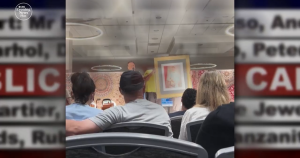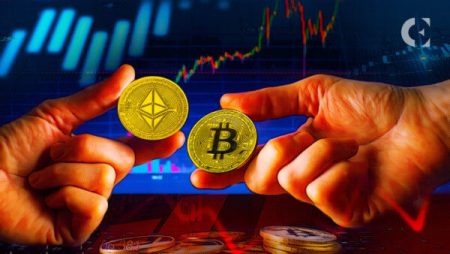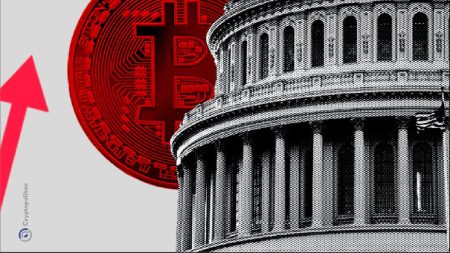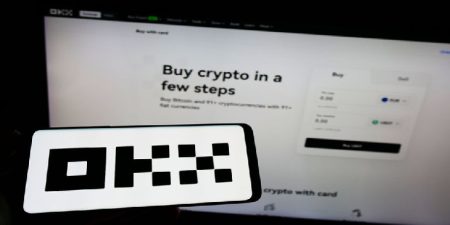The Crypto World Rocked: The LIBRA Scandal and Meme Coin Mania
The cryptocurrency space has always been a breeding ground for drama, innovation, and chaos. In February, the LIBRA scandal sent shockwaves through the crypto community, reigniting debates about the role of meme coins in the ecosystem. At the center of the storm was Argentine President Javier Milei, whose involvement in the LIBRA token launch sparked outrage and raised questions about the ethics of meme coins. BeInCrypto caught up with Memeland CEO Ray Chan at Consensus Hong Kong to discuss the incident, the future of meme coins, and the broader implications for the crypto industry.
LIBRA: From Token to Meme Coin Fiasco
The LIBRA scandal began innocently enough. A mysterious group launched a website for the “Viva La Libertad” project, inspired by a slogan popularized by President Milei. The mission? To boost Argentina’s economy by funding small businesses and local projects. The LIBRA token was introduced as the vehicle to channel funds, with 50% of tokens supposedly dedicated to fueling Argentina’s growth. Hours after the website went live, the token was minted on the Solana blockchain.
But things took a turn when Milei posted about the project on X (formerly Twitter), linking to the website and the token’s contract address. His endorsement sent the token’s price soaring, with its market cap reaching over $4 billion in mere hours. Insiders cashed out over $100 million in profits, but the party didn’t last long. The token crashed, revealing a classic pump-and-dump scheme. The website lacked substance, and over $87 million was pulled out in the first three hours.
Milei quickly backtracked, claiming he hadn’t understood the project and withdrawing his endorsement. But the damage was done. Investigations by blockchain analytics firm Bubblempas and on-chain researcher Coffeezilla revealed ties between the LIBRA team and other suspicious token launches, including the MELANIA coin linked to former First Lady Melania Trump. These tokens were part of a pattern of insider trading, market manipulation, and rug pulls, leaving retail investors burned and the crypto community fed up.
Meme Coins: A Culture of Pump-and-Dump?
The LIBRA scandal is just the latest in a long line of meme coin controversies. Critics argue that meme coins are inherently extractive, enriching insiders while preying on smaller investors who are lured in by hype and false promises. These tokens often lack real utility or a roadmap, existing solely as speculative gambles. The LIBRA case, however, stood out because it exploited President Milei’s influence to create the illusion of legitimacy.
For Ray Chan, CEO of Memeland and a veteran of the meme coin industry, the problem lies in unrealistic expectations. “If it’s a meme coin, you should expect it to go to zero,” he said. “Most of these tokens don’t have a roadmap or utility. They’re for entertainment purposes only.” Chan acknowledges that the industry is still in its early stages, and its volatility is part of the package. But he also believes that the sector will mature over time, with fewer scams and more meaningful projects.
Crypto Community Reacts: Frustration and Fatigue
The LIBRA scandal struck a nerve in the crypto community, with many taking to social media to express their frustration. Critics argue that meme coins are a distraction from the industry’s true potential, undermining efforts to build legitimate use cases for blockchain technology. “The crypto industry needs to engage in serious self-criticism if it doesn’t want to end up as an irrelevant circus,” said blockchain researcher Pablo Sabbatella. “For years, major players have been creating narratives, inflating them, and then dumping tokens on retail investors, driving the public away.”
The broader concern is that meme coins are alienating smaller investors and damaging the industry’s reputation. While some see meme coins as a harmless form of entertainment, others view them as a symptom of a deeper problem: a culture that prioritizes quick profits over long-term value creation. Chan acknowledges these concerns but believes the industry will grow out of its “ Wild West” phase. “As more legitimate companies and builders enter the space, I expect the industry to grow in a healthier direction,” he said.
Meme Coins: More Than Just a Joke?
While critics dismiss meme coins as a waste of time, Chan sees them as a unique opportunity for innovation. “Meme coins are the TikTok of crypto,” he said. “They’re fun, engaging, and easy to join. This is actually the biggest driving force of mass adoption.” For Chan, meme coins are more than just a joke—they represent the democratization of finance. Anyone can create a token, and anyone can participate. This accessibility has lowered the barriers to entry, opening the door to new creators and investors.
Chan also points to the differences between Web2 and Web3. In Web2, companies rely on venture capital and IPOs, which come with significant constraints. In Web3, however, community-driven projects can bypass traditional funding routes. “If you can mobilize a community that understands and supports what you’re building, VC funding becomes far less essential,” he explained. Meme coins may not solve real-world problems like Bitcoin or blockchain infrastructure, but they serve a purpose: they bring people into the crypto space.
The Future of Meme Coins: Growth, Maturity, and Mass Adoption
Despite the scandals and setbacks, Ray Chan is optimistic about the future of meme coins. He believes the industry will mature as more reputable builders and companies enter the space. “When support for tokens isn’t driven by influencers but by an understanding of the team and their work, it will be a healthier and more sustainable environment,” he said.
Chan also predicts that meme coins will play a key role in driving mass adoption. Just as social media platforms like TikTok brought billions of people online, meme coins could serve as a gateway to crypto for mainstream users. The combination of accessibility, community engagement, and entertainment value makes meme coins a powerful tool for attracting new users to the space.
Ultimately, whether meme coins become a force for good or remain a source of frustration depends on how the industry evolves. If projects focus on building value instead of chasing quick profits, the sector could mature into something meaningful. Until then, the crypto world will continue to navigate the wild world of meme coins—full of scams, surprises, and occasional success stories. Only time will tell if the LIBRA scandal marks a turning point or just another bump in the road.















